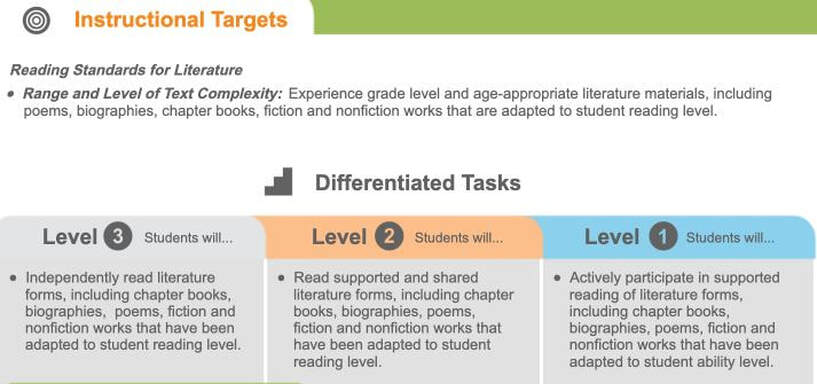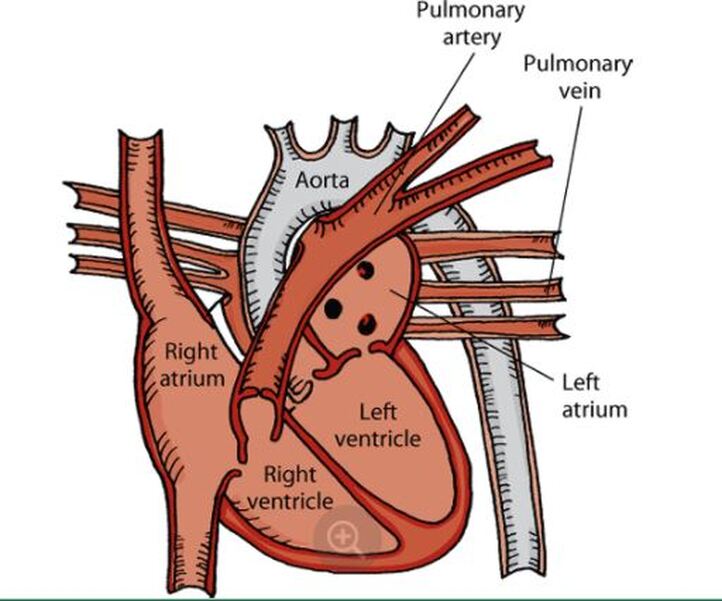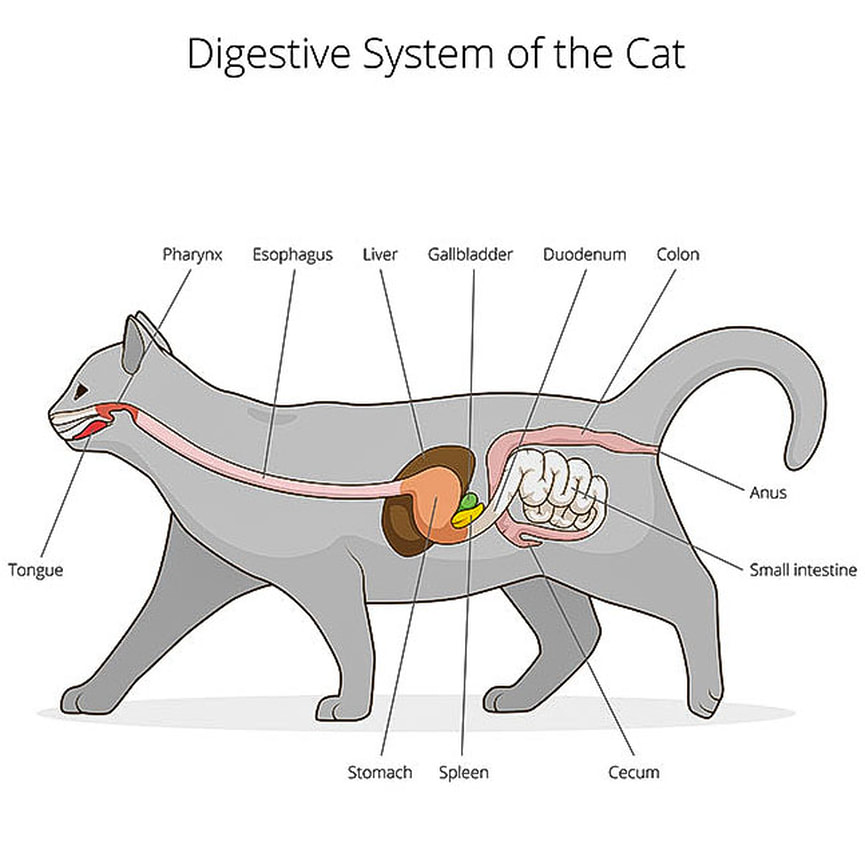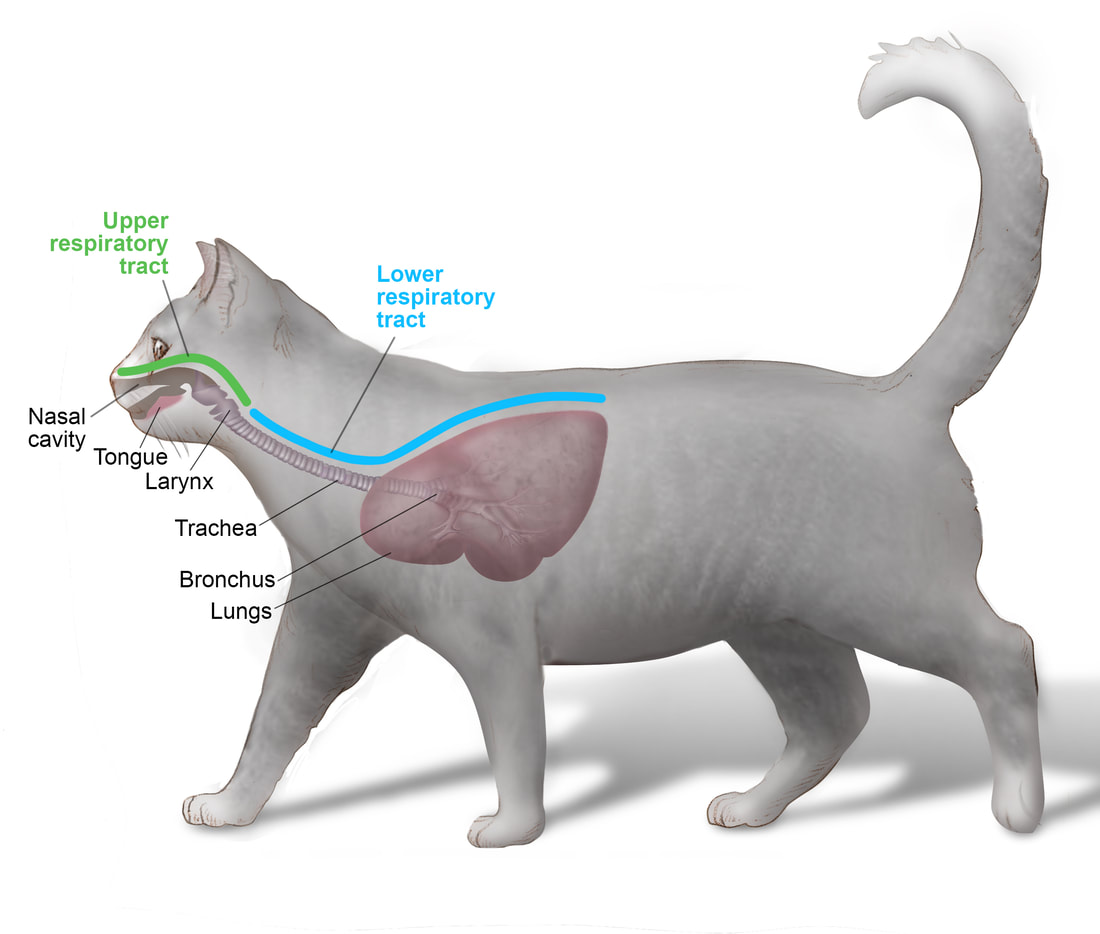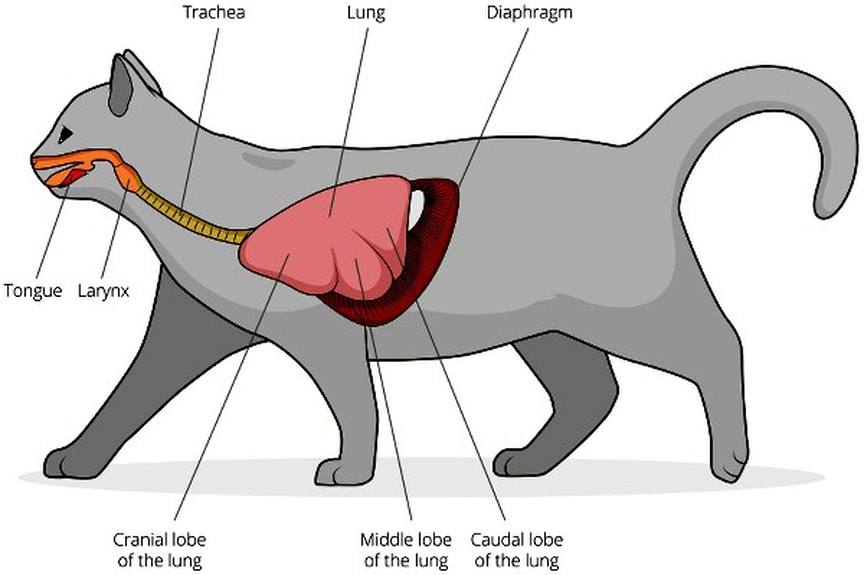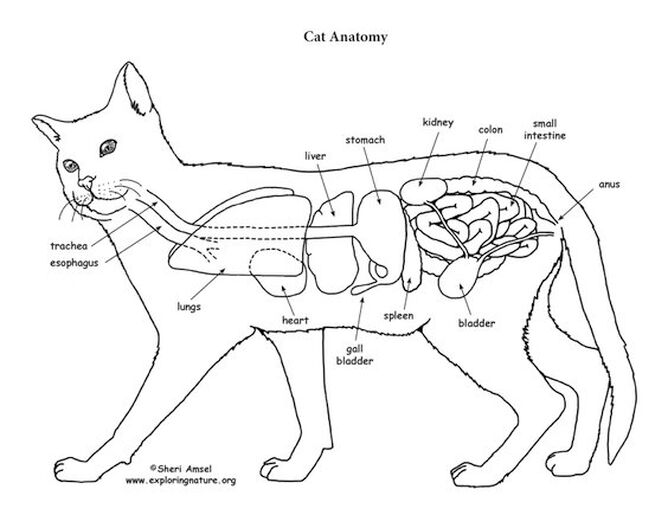Essential Element: EE.MS-LS1-3
This is a DLM tested standard.
Target Level:
Make a claim about how a structure (e.g., organs and organ systems) and its related function supports survival of animals (circulatory, digestive, and respiratory systems).
Precursor Level:
Use a model to demonstrate how organs are connected in major organ systems.
Initial Level:
Recognize major organs of animals.
Make a claim about how a structure (e.g., organs and organ systems) and its related function supports survival of animals (circulatory, digestive, and respiratory systems).
Precursor Level:
Use a model to demonstrate how organs are connected in major organ systems.
Initial Level:
Recognize major organs of animals.
Learning Intention: Students will learn about the various organs and function support systems of cats.
Success Criteria: Students will be successful when they can make a claim about how the organs and function system supports the survival of cats.
Success Criteria: Students will be successful when they can make a claim about how the organs and function system supports the survival of cats.
Vocabulary
- brain - the control center of the body.
- lungs - function in gas exchange, responsible for adding oxygen to and removing carbon dioxide from the blood.
- kidneys - maintain water balance and help rid the body of waste.
- circulatory system - the body system that moves blood throughout the body
- digestive system - the body system that breaks down food to give the whole body the nutrients it needs
- organ - a part of an organism, made of different kinds of tissue, that has a specific function
- respiratory system - the body system that controls breathing by inhaling oxygen and exhaling carbon dioxide
- stomach - helps to digest food. This means it helps to make food ready so that it can be taken into the cat’s blood where the broken down food can feed the cat.
- intestine - part of the system that breaks down food so it can be used by the body.
- liver - most important organ, removes waste and toxic materials from the blood.
- heart - serves as a pump that circulates blood throughout the body.
Animal Structure and Functions
The major organs in higher animals include the brain, heart, lungs, kidneys, liver, stomach, intestines, and skin, as well as the reproductive organs. However, some animals, such as jellyfish, lack organs altogether. In these animals, all functions are handled at the cellular or tissue level.
Britannica Kids - Animal Organs
Please visit the website to get a short introduction of some of the major organs that animals have.
kids.britannica.com/students/article/organ/623458#324462-toc
Then visit the website to see 2 diagrams of frog digestive system and earthworm digestive system.
kids.britannica.com/students/article/organ/623458/media?assemblyId=127643
Cat and Dog Anatomy:
www.vetmed.wsu.edu/outreach/Pet-Health-Topics/categories/cat-and-dog-anatomy
kids.britannica.com/students/article/organ/623458#324462-toc
Then visit the website to see 2 diagrams of frog digestive system and earthworm digestive system.
kids.britannica.com/students/article/organ/623458/media?assemblyId=127643
Cat and Dog Anatomy:
www.vetmed.wsu.edu/outreach/Pet-Health-Topics/categories/cat-and-dog-anatomy
Reading Resources
We will read the following two texts from Science A-Z:
* Vertebrates (the one with the giraffe head on the cover)
"The book Vertebrates identifies common characteristics of vertebrates, including bone structure and major parts of the skeleton. The book organizes vertebrates into five classes-mammals, birds, fish, reptiles, and amphibians-and explains how each class can be distinguished from the others. These differences include body covering, body temperature, means of breathing, birth method, and other distinguishing features. Examples of animals in each class of vertebrates are provided."
* Inside Living Things
"The book Inside Living Things provides an introduction to the biology of plants and animals, including humans. The book begins with a comparison of plant and animal cells. It describes the most important parts and functions of each type of cell. The book then explains how cells combine to form various types of tissue, tissues combine to form organs, and organs work together as parts of body systems. Each part serves an essential role in an organism's survival."
* Vertebrates (the one with the giraffe head on the cover)
"The book Vertebrates identifies common characteristics of vertebrates, including bone structure and major parts of the skeleton. The book organizes vertebrates into five classes-mammals, birds, fish, reptiles, and amphibians-and explains how each class can be distinguished from the others. These differences include body covering, body temperature, means of breathing, birth method, and other distinguishing features. Examples of animals in each class of vertebrates are provided."
* Inside Living Things
"The book Inside Living Things provides an introduction to the biology of plants and animals, including humans. The book begins with a comparison of plant and animal cells. It describes the most important parts and functions of each type of cell. The book then explains how cells combine to form various types of tissue, tissues combine to form organs, and organs work together as parts of body systems. Each part serves an essential role in an organism's survival."
Essential Questions from Vertebrates from Raz Kids
- Which characteristics help keep mammals warm in winter?
- How do fish breathe underwater?
- How do reptiles change their body temperature?
- What are three things all amphibians have in common?
- Do amphibians breathe with gills, lungs, or both?
Essential Questions from Inside Living Things from Raz Kids
- Give an example of one organ and explain its function.
- How are organs and body systems related?
- Which body systems do you feel are most important to an organisms survival?
- Can the heart and lungs function without the brain? Explain why or why not.
- How does the circulatory systems assist the respiratory system?
Cat Circulatory System
The circulatory system includes the heart and blood vessels. The circulatory system performs the function of pumping and carrying blood to the rest of the body. The blood contains nutrients and oxygen to provide energy to allow the cells of the body to perform work. The right side of the heart
To keep a cat's heart and circulatory system healthy, exercise and a healthy diet are the best defenses against common heart and circulatory system conditions such as heartworms and heart attacks.
Introduction to Heart and Blood Vessel Disorders in Cats - Cat Owners - Veterinary Manual (msdvetmanual.com)
To keep a cat's heart and circulatory system healthy, exercise and a healthy diet are the best defenses against common heart and circulatory system conditions such as heartworms and heart attacks.
Introduction to Heart and Blood Vessel Disorders in Cats - Cat Owners - Veterinary Manual (msdvetmanual.com)
Cat Digestive System
The digestive system includes all the organs that are involved in taking in and processing food. It begins with the mouth and includes the esophagus, stomach, liver, pancreas, intestines, rectum, and anus.
The process of digestion begins when your pet picks up food with its mouth and starts chewing. Enzymes found in saliva begin breaking down the food chemically. The process continues with swallowing, additional breakdown of food in the stomach, absorption of nutrients in the intestines, and elimination of waste. Digestion is critical not only for providing nutrients but also for maintaining the proper balance of fluid and electrolytes (salts) in the body.
The functions of the digestive system can be divided into 4 main categories:
www.merckvetmanual.com/cat-owners/digestive-disorders-of-cats/introduction-to-digestive-disorders-of-cats
The process of digestion begins when your pet picks up food with its mouth and starts chewing. Enzymes found in saliva begin breaking down the food chemically. The process continues with swallowing, additional breakdown of food in the stomach, absorption of nutrients in the intestines, and elimination of waste. Digestion is critical not only for providing nutrients but also for maintaining the proper balance of fluid and electrolytes (salts) in the body.
The functions of the digestive system can be divided into 4 main categories:
- digestion
- absorption of nutrients
- motility (movement through the digestive tract)
- elimination of feces
www.merckvetmanual.com/cat-owners/digestive-disorders-of-cats/introduction-to-digestive-disorders-of-cats
Cat Facts: 7 Stops Along Your Cat’s Digestive System
www.catster.com/lifestyle/cat-facts-digestive-system-food-butt-mouth
www.catster.com/lifestyle/cat-facts-digestive-system-food-butt-mouth
3D feline anatomy: normal thorax and abdomen
Cat Respiratory System
The respiratory system consists of the large and small airways and the lungs. When a cat breathes air in through its nose or mouth, the air travels down the trachea, which divides into the tubes known as the right and left bronchi, then into the smaller airways called bronchioles in the lungs.
https://www.merckvetmanual.com/cat-owners/lung-and-airway-disorders-of-cats/introduction-to-lung-and-airway-disorders-of-cats#:~:text=The%20respiratory%20system%20consists%20of,called%20bronchioles%20in%20the%20lungs.
https://www.merckvetmanual.com/cat-owners/lung-and-airway-disorders-of-cats/introduction-to-lung-and-airway-disorders-of-cats#:~:text=The%20respiratory%20system%20consists%20of,called%20bronchioles%20in%20the%20lungs.
Interactive Dissection Activity
https://www.thoughtco.com/animal-organ-systems-4101795
http://aevm.tamu.edu/files/2010/06/Anatomy_and_Physiology.pdf
http://aevm.tamu.edu/files/2010/06/Anatomy_and_Physiology.pdf
Organ Matching Game
Drawing Pages
Reading Resources:
